Media Literacy: How to Watch the Debates

It’s that time again– the quadrennial activity we know as the presidential debates is about to begin.
The 2016 campaign has already provided a wealth of dramatic moments, thwarted expectations and unusual exchanges between candidates and other public figures.
The nature of the two major party candidates—one from the world of business and reality television who has never held public office, and one a highly experienced political figure aiming to be the first female president—has led to eager anticipation of their face-to-face meetings.
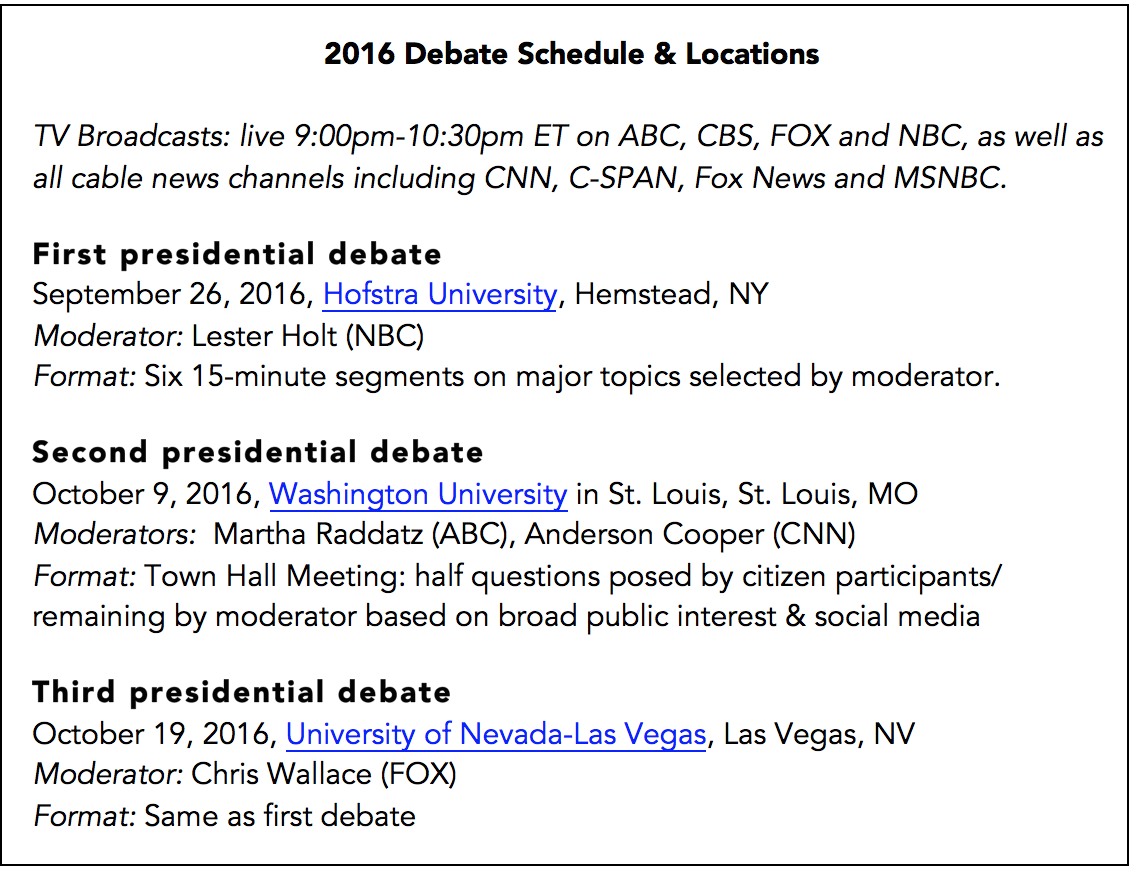
✻ UPDATE ~ CSPAN Video & Transcripts from Debate #1
✻ UPDATE ~ CSPAN Video & Transcripts from Debate #2
✻ UPDATE ~ Topics for Debate #3.
✻ UPDATE ~ CSPAN Video & Transcripts from Debate #3
The debates provide rich teaching opportunities in social studies, language arts and media literacy. In addition to helping students understand the role of the debates in our election process, using the debates as a teaching tool will help students examine the candidates’ use of language and word choice, and analyze the media’s influence on both the debate process and on the electorate.
Learn more about related Common Core and state standards
for ELA, Civics and History/Social Studies

Karen Zill
Media literacy is the ability to access, analyze, evaluate, create and act using all forms of communication. According to the National Association for Media Literacy Education (NAMLE): “Media literacy empowers people to be critical thinkers and makers, effective communicators and active citizens.” (Source)
Simply put, media literacy is the ability to apply critical thinking to media messages – in this case, analyzing all aspects of the televised debates, from the sponsors, to the candidates’ words, to the images and the media production techniques.
Preparing Students To Watch & Analyze the Presidential Debates
What do your students need to know before they watch the debates? Simply taking notes is no longer sufficient. Students who plan to watch the debate should, ahead of time, learn the two candidates’ positions and prior statements on various topics. Reading news stories that analyzed the primary debates also would be helpful.
► Students can research the candidates’ positions, using candidate websites: Clinton | Trump
► Ask students to choose 3 or 4 issues listed on the candidates’ websites and present the pros and cons of each one. Succinct summaries and arguments for and against many major issues are available at ProCon.org.
► Review the glossary terms in our Handout #1.
One thing to keep in mind is that the presidential debates are not debates in the classic sense. A debate is a formal, oral contest between two individuals or teams that present arguments to support opposing sides of a question (the pros and the cons). Debates follow a set of rules so that participants can state their positions and attack their opponents’ views in a fair and orderly manner. (Source)
American election year debates instead follow a Q-and-A format covering multiple topics, with each debate focusing on a specific area, such as foreign policy. The rules of formal debate are not in play.
Key Media Literacy Concepts and Student Questions about the Debates
- All media are constructed. Who is responsible for creating the debate? Who decides the questions? How are audience members involved, if at all? Who is omitted from participation and why? (See reference to Two-Party system in Topics for Further Exploration, below.) What topics might be left out and why?
- Media sources use language unique to the medium. How are symbols, stagecraft, split screen, and cutaways used and why?
- Many media are created for commercial purposes. Who is the audience? Who benefits from these debates? Are they sponsored? Who are the advertisers?
Activity: Viewing vs. Listening. To sharpen the students’ media literacy skills, consider doing the following activity: Ask for several volunteers who will only listen to one of the debates. They may find it carried by the local NPR station, or they may simply put a cover over the screen of their TV during the debate, leaving the sound on. Discuss the students’ different perceptions based on whether they viewed or only listened to the debate. (See Post-viewing Discussion below.)
What Students Should Watch For
In any televised political debate there are two levels or types of viewing that can occur. One focuses on the content – the specific proposals and ideas offered by each candidate. The other looks at the non-content aspects of the debate, which include the television production techniques and the non-verbal cues (“body language”) displayed by the candidates themselves. Analysis of both types of viewing falls under the umbrella of media literacy.
Content. What ideas or proposals, old or new, do the candidates present during the debate? Students can note these in the Media Literacy Analysis Worksheet we have tailored specifically for these debates (Handout #2).
Production techniques. Where is the camera focused? Are there shots such as split screen, or reaction shots of the other candidate or audience members? Is there music? What kind? When is it used? What does the stage look like? What colors are used in the background? How do these techniques affect the viewer’s perception of the debate?
Candidates’ language. Since the two candidates became the presumptive nominees, they have gone after each other in speeches and in commercials. Donald Trump, for example, has repeatedly used the phrases “lyin’ Hillary” and “crooked Hillary.” Hillary Clinton has called her opponent “unprepared” and some of his supporters “phobics.” Students should be aware of these prior comments so they can listen for them during the debates.
Use of oppositional research. Consultants have done “oppositional research” and advised each candidate on which issue(s) their opponent is most vulnerable. Republican strategists began field-testing ads that they know influence voters a year before the 2016 nominating conventions. Among other things, Trump has referenced Bill Clinton’s impeachment, while Hillary has been critical of Trump’s lack of foreign policy experience. Expect Hillary Clinton’s email controversy to be a hot topic. Look for each candidate to reiterate their criticisms during the debates.
Emotional language. The candidates also have certain emotional buzzwords or phrases that they like to use. For example, Mr. Trump frequently sprinkles his statements with superlatives, such as “tremendous.” Mrs. Clinton often makes reference to “the American people.” What does their word usage tell you about the candidates?
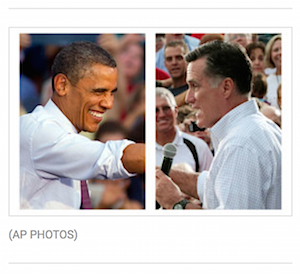
Example of a familiar political debate “split-screen” shot. Here, while GOP candidate Mitt Romney is speaking, another shot of President Obama (right, listening and reacting) is seen on the same screen.
Conducting Post-Debate Analysis with Students
Sharing our debate handouts (Glossary and Media Literacy Analysis Worksheet) can be very helpful to students and teachers as they conduct some post-debate analysis. During the discussion, students might consider these questions, among others:
► In general, did the candidates answer the questions asked by the moderator, or did they use the time primarily to repeat statements that are part of their campaign rhetoric?
► How effective was the moderator in attempting to keep candidates “on topic”?
► What new information, if any, did students learn from or about either candidate?
► Discuss each of the sections of the Media Literacy Analysis Worksheet. How would students evaluate each candidate’s overall performance in the debate?
► How did viewing compare to only listening? Ask the “listeners” which candidate came across as more informed or more eloquent. How do their perceptions compare with those of the “viewers”? How do they explain the differences?
Topics for Further Exploration or Debate
Two-party system. The two major political parties in the U.S. have evolved as a matter of tradition, but there is no law restricting the number of parties. In fact, many presidential races have included a third-party candidate, some getting more than 30% of the popular vote. Ask students to research and discuss the role of parties other than the Republican and Democratic in previous presidential campaigns. Have them debate the pros and cons of a two-party system. (Update: On Sept. 16 the Commission on Presidential Debates announced that third party candidates did not receive enough support in polls to enable them to participate in the Sept. 26 debate. The Atlantic)
Campaign finance. The influence of money in political campaigns seems to be a perennial issue. Ask students to research the amounts spent on the presidential campaigns of each candidate, or by the candidates in a local race for Congress or another local office. Is it fair to allow unlimited funding of campaigns? Who benefits? Who is at a disadvantage? Who should be allowed to contribute and how much? Have students debate the pros and cons of public funding of political campaigns.
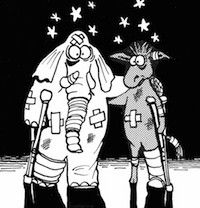
Ask students to research the role of political parties in American politics. How has that role changed over time? Do the parties serve an important function in the 21st century? Have students debate the pros and cons of open elections, that is, elections in which voters may vote for any candidate regardless of political affiliation. How does that relate to the Electoral College process?
Opportunities for Rich Learning Experiences
As our discussion here suggests, the presidential debates provide a portal through which students can explore a multitude of topics that are critically important in developing their media literacy skills and preparing them for future role as voting citizens in a democracy.
In our minds, there is little doubt that the time involved in pursuing these learning opportunities is a worthwhile and even crucial investment in any student’s education.
Visit this page at the Media Literacy Clearinghouse
for many supporting resource links on the presidential debates
© 2016, Frank W. Baker and Karen Zill
The authors encourage educators to download, copy and distribute both of the worksheets linked to this post. MiddleWeb.com articles can be freely distributed provided the source and link are included in the material.
__________
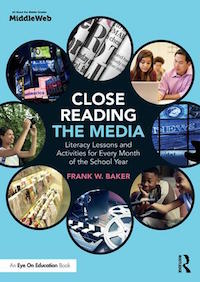
Karen Zill is a freelance writer based in Washington, DC, whose work includes film discussion guides, teacher guides for public television programs, and essays and articles on media literacy.

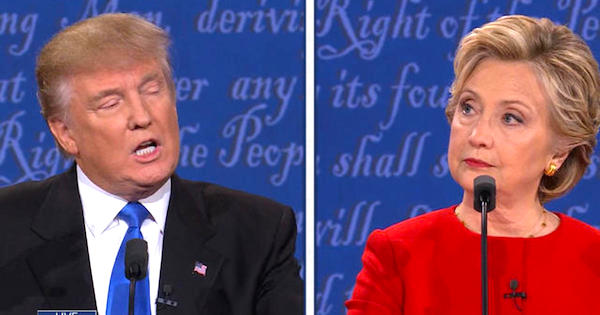
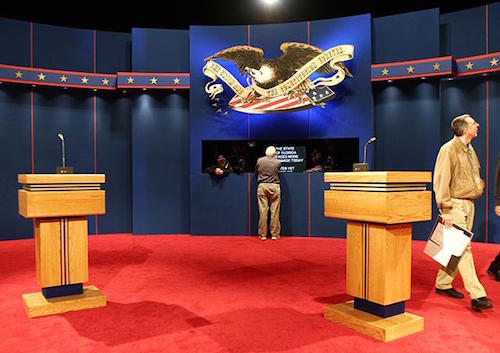
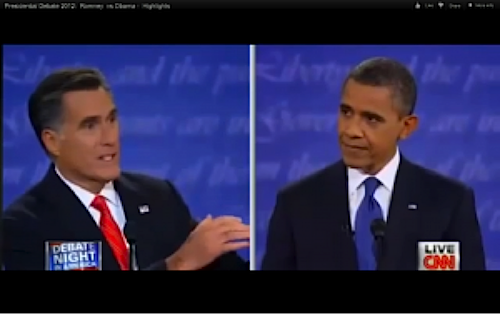


































Readers may be interested in participating in this FREE webinar: Teaching About Presidential Debates, Wednesday September 14, 7pm ET. Register here: https://docs.google.com/forms/d/1l1NmPIu1k4BTUkjq2duT95RGvka5p0ClfDLy5IQYh6w/viewform?edit_requested=true
The Teaching Presidential Debates webinar has now been archived and can be found here:
What grade level do you believe this would be most appropriate? How early is too early to start addressing media literacy?
Media literacy can be taught as early as in elementary school. There are many examples of how that can be done. However I believe the debates are most appropriate in the middle and high school.